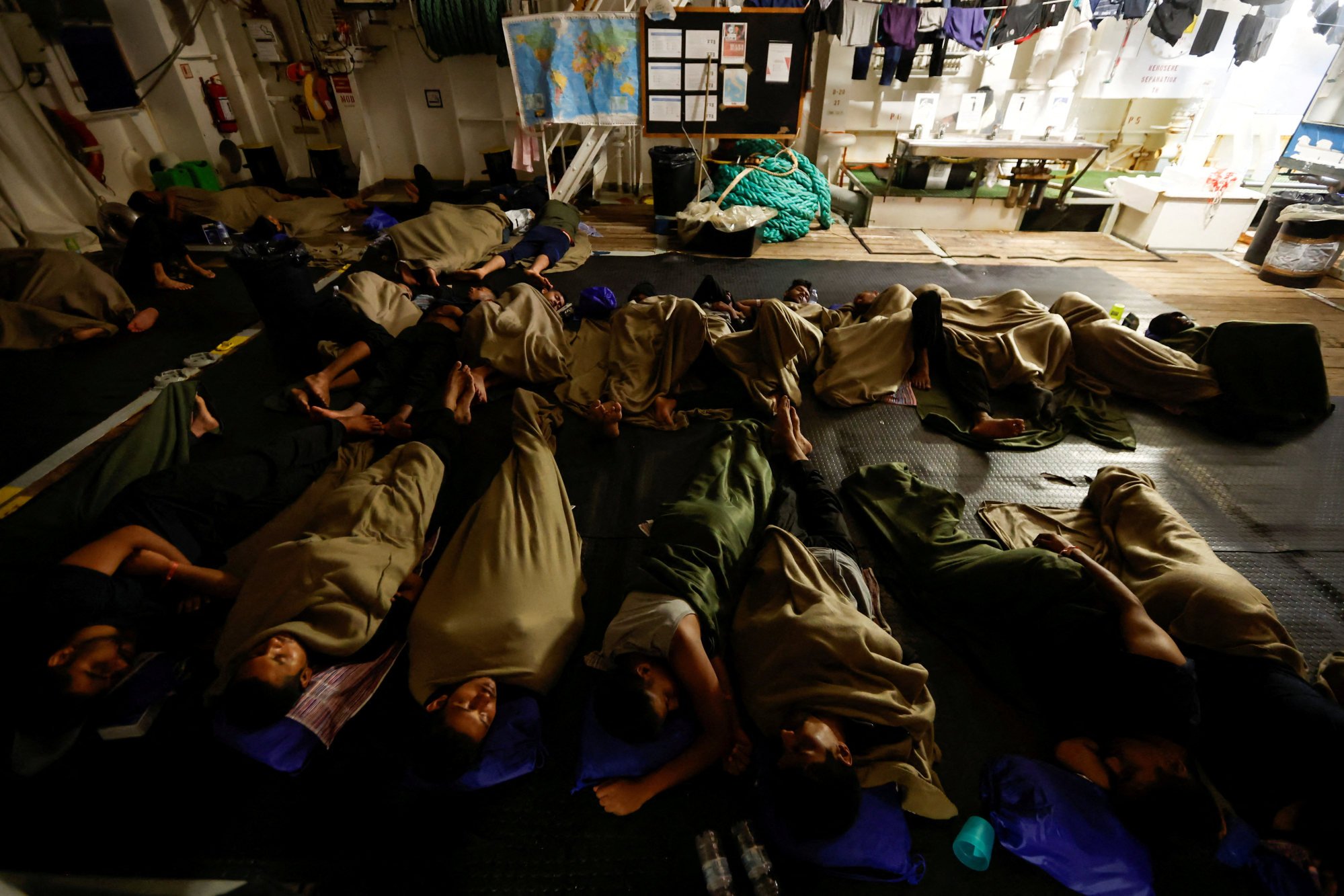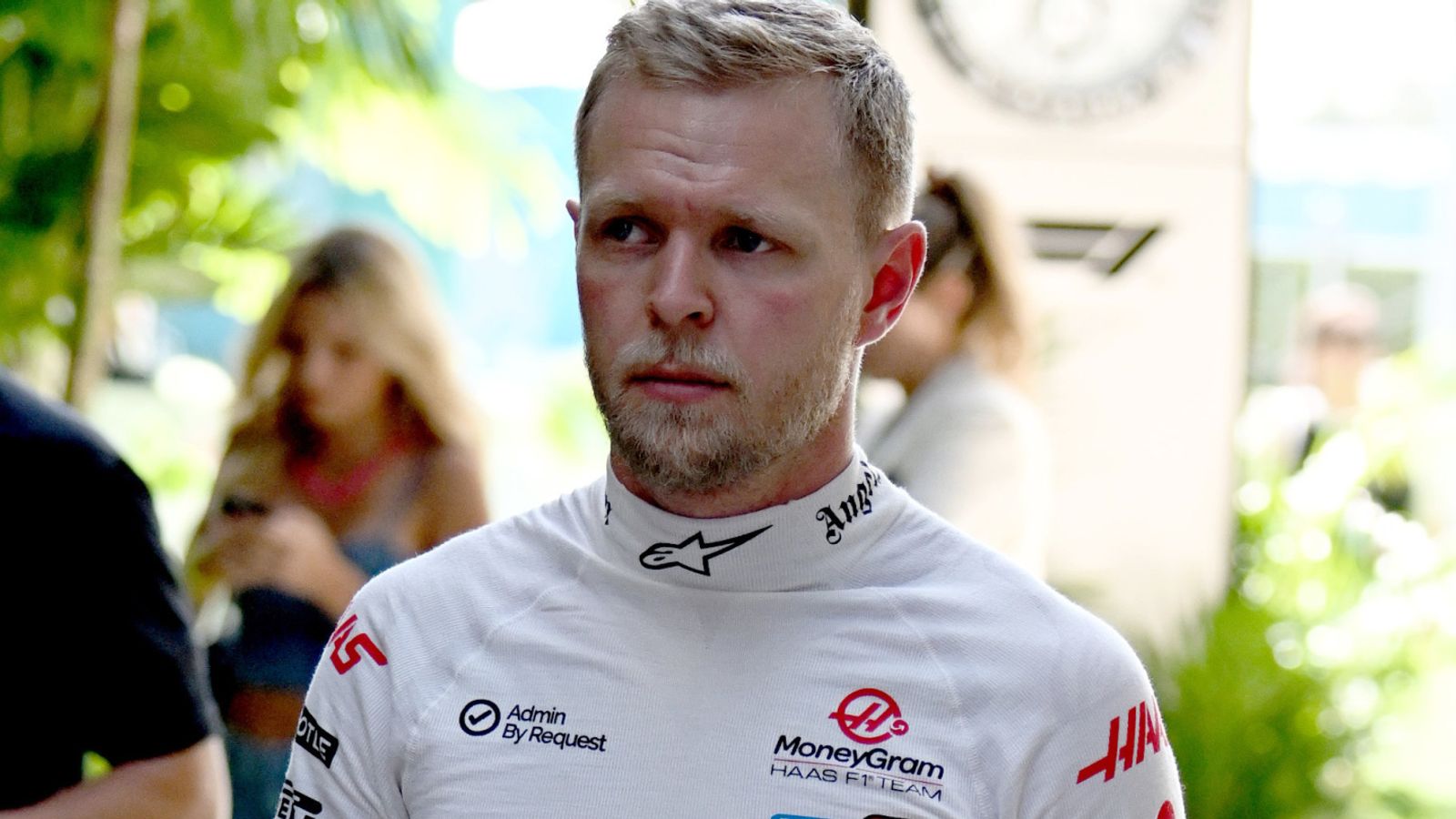Albania has agreed to host two migrant processing centres on its territory that will be fully run by Italy, under a deal that worries many human rights activists. The European Union, however, sees the agreement as a possible future template.
Italy has long complained about not getting enough help from its EU partners in dealing with migrants arriving on its shores from northern Africa. Italy’s right-wing Premier Giorgia Meloni is keen to show she is taking action as arrivals spiked 55 per cent this year, to nearly 160,000 – though still well below the levels reached during the 2015 crisis.
In January Italy’s lower chamber of parliament approved the novel deal with non-EU member Albania, followed a month later by the Senate.
Also in January, Albania’s Constitutional Court rejected a legal challenge that could have blocked the deal. Albania’s parliament approved the deal with 77 votes to zero on Thursday, while 63 lawmakers were marked not present as the opposition refused to participate. The president will also issue a decree as the final step of approval.
Here is a look at what all this means:
What is known about the deal?
Under a five-year agreement announced in November, Albania will shelter up to 36,000 migrants a year as Rome fast-tracks their asylum requests.
Those picked up within Italy’s territorial waters, or by rescue ships operated by non-governmental organizations, would retain their right under international and EU law to apply for asylum in Italy and have their claims processed there.
Italy has agreed to take back any migrants whose requests have been rejected, and they will likely be repatriated. Children and pregnant women will not be covered by the plan.
UK’s Sunak survives knife-edge vote as Rwanda bill clears Commons
UK’s Sunak survives knife-edge vote as Rwanda bill clears Commons
One of the processing centres will be located in the port of Shengjin, one of the main tourist areas on the Adriatic Sea, about 75 kilometres (46 miles) south of the Albanian capital, Tirana.
The second facility will be 20 kilometres (12 miles) north at a former military airport in Gjader. Italy will spend nearly 600 million euros (US$650 million) over five years for the construction and operation of the two centres under Italian jurisdiction. Up to 3,000 migrants at a time can stay at the two facilities. Outside security will be provided by Albanian guards.
The facilities are expected to be operational by spring.
What does Italy get?
The deal could help relieve chronic overcrowding at initial asylum processing centres in Italy, where hundreds of thousands of migrants are held after risky sea voyages across the Mediterranean Sea from Libya, Tunisia, Turkey and other countries.
Italy has sought more help from its fellow EU nations.
Many of the migrants are ineligible for asylum as they leave due to poverty, not persecution or war. While waiting for a final decision on their asylum applications, many make their way to northern Europe, hoping to find family or jobs.
UK ‘very carefully’ considering basing lawyers in Rwanda as part of asylum deal
UK ‘very carefully’ considering basing lawyers in Rwanda as part of asylum deal
What’s in it for Albania?
When the deal was announced, Meloni said Albania “behaves as if it’s one” of the EU member states. Albania “is not only a friend of Italy, but also a friend of the European Union,” she said.
Many in Albania see it as quid pro quo for Italian hospitality when thousands of Albanians fleeing poverty after the fall of communism in 1991 found refuge in Italy.
Albania, a small west Balkan country, does not belong to the EU but is seeking membership, beginning talks with Brussels last year. Despite poverty, it has a history of accepting refugees, including members of China’s Uygur ethnic group, Afghans and dissidents from Iran, as well as taking a million ethnic Albanians from neighbouring Kosovo during wartime in 1999.
But members of Albania’s centre-right opposition opposed the deal on human rights grounds. Thirty opposition lawmakers went to the Constitutional Court in an unsuccessful bid to block ratification.

What are the humanitarian and legal concerns?
Migration experts say the agreement follows a worrying trend of EU nations looking beyond the bloc’s borders to manage migration, like Denmark and Britain floating the idea of sending asylum seekers to be held in African nations.
The Council of Europe’s commissioner for human rights has expressed a range of concerns, including whether migrants would have access to adequate legal aid.
The European Commission, which supervises the application of EU laws, left the door open for the agreement, as long as it’s only applied to migrants picked up in international waters.
The Migration Policy Institute Europe says the deal fails to describe what migration procedures would be followed, leaving open questions as to how exactly the process would work.






